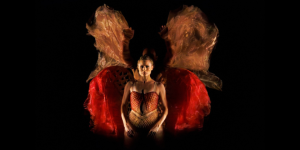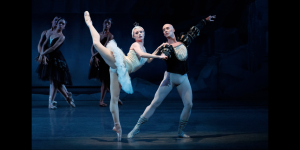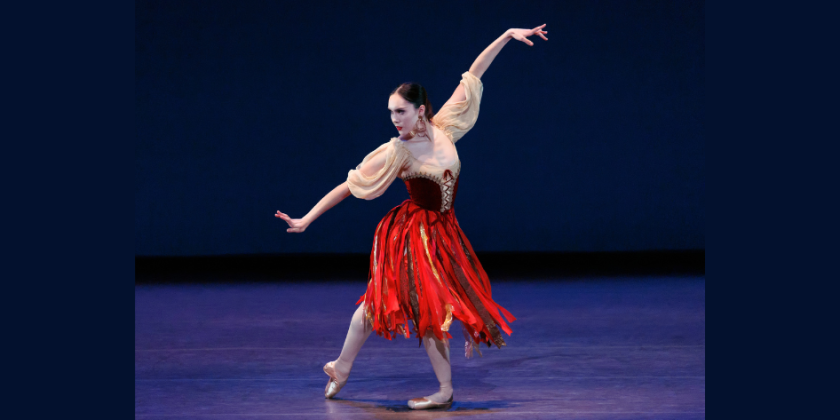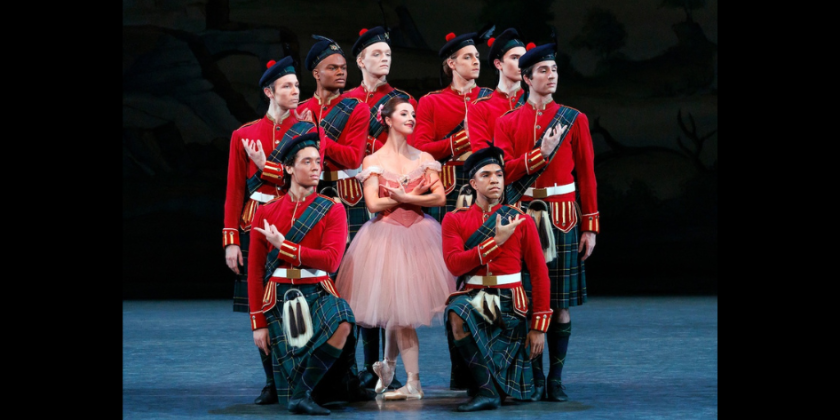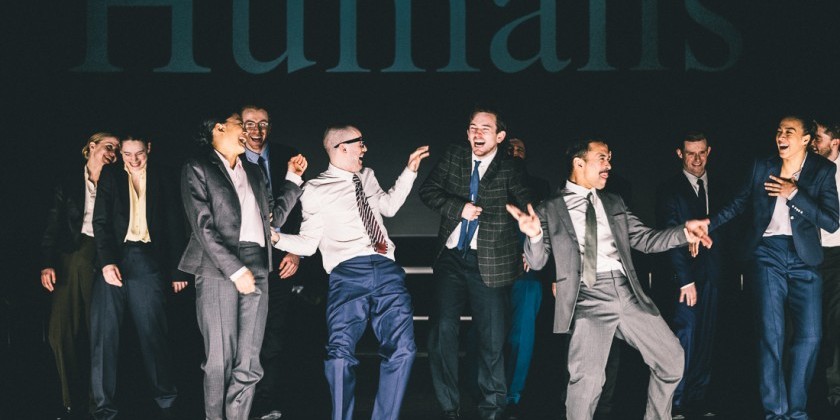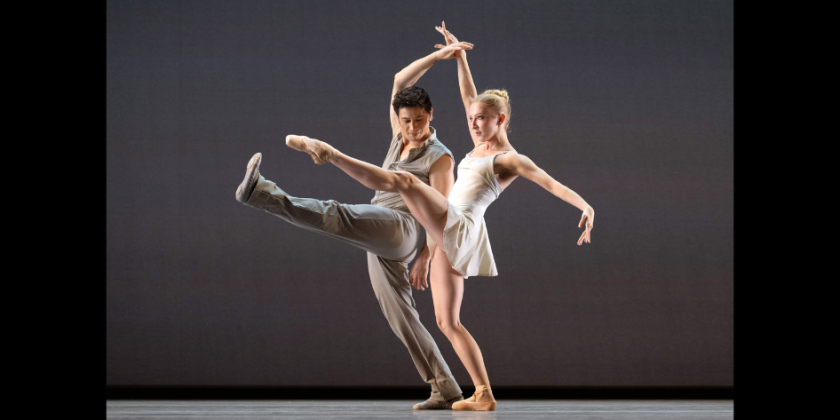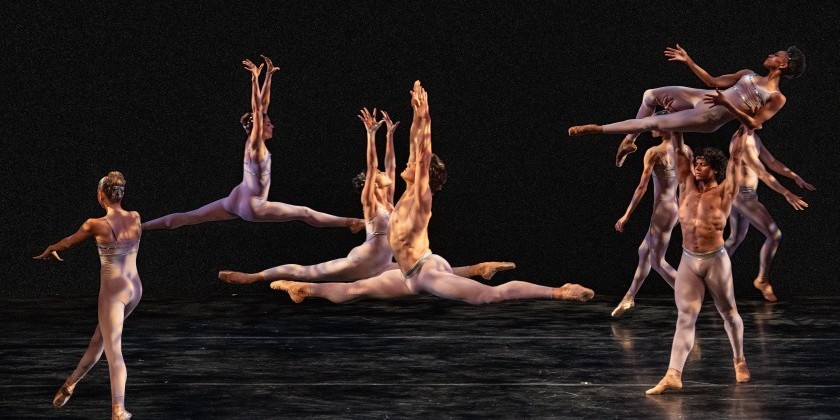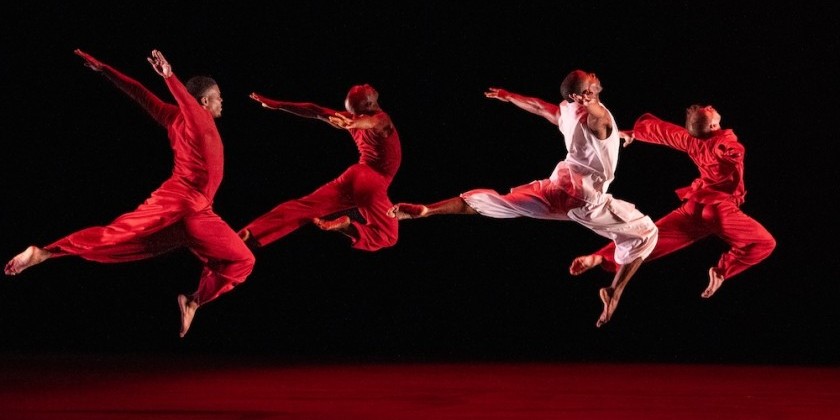IMPRESSIONS: New York City Ballet’s 2019 Spring Season — Week Three
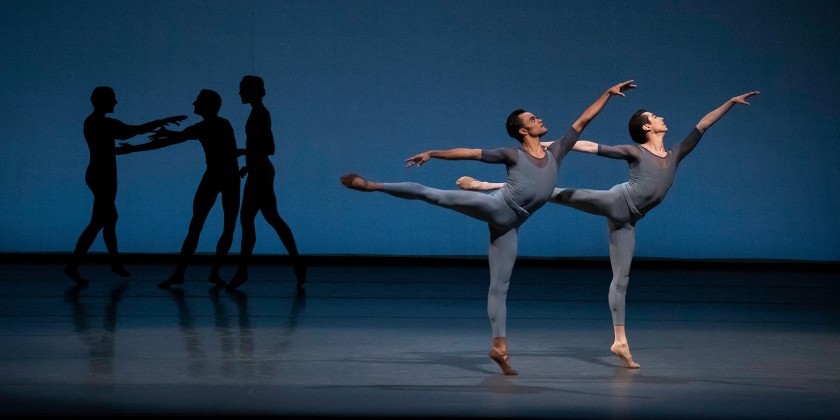
David H. Koch Theater
Barber, Broadway & Balanchine: May 7, 2019
Balanchine meets Peck: May 10, 2019
New York City Ballet’s spring season shows a kaleidoscope of works.
The triple B program “Barber, Broadway & Balanchine” (presented on Tuesday, May 7) hides the fact that former ballet master in chief, Peter Martins, is responsible for one of the pieces on the program. His Barber Violin Concerto with costumes by William Ivey Long, tailor-made for prima ballerina Merrill Ashley and modern dancer David Parsons for the 1988 American Music Festival, has not aged well.
Seeing a quintessential Balanchine ballerina let her hair down and get carried off by a downtown dance hunk proved a spiritual experience that successfully veiled the thinness of the choreography. With current dancers taking on a greater variety of roles, that simple transformation no longer comes off as profound.
Despite the noble effort of Teresa Reichlen, Barber Violin Concerto tanked on Tuesday evening. Jared Angle looks positively unhappy in his ill-fitting tights and the other pas de deux that ends the piece reads as plain silly as the intentionally mismatched hyper Megan Fairchild keeps running in circles around stoic Aarón Sanz. She waves her arms and hands at his face and between his legs, and as a reward he lifts and spins her. The gravitas and spunk of the original cast members, which included Adam Lüders and Paul Taylor dancer Kate Johnson, deservedly attracted attention thirty years ago. Now that pairing ballet and modern dance is often the norm, the work has no reason to be. Fine solo violinist Kurt Nikkanen is not to be blamed.
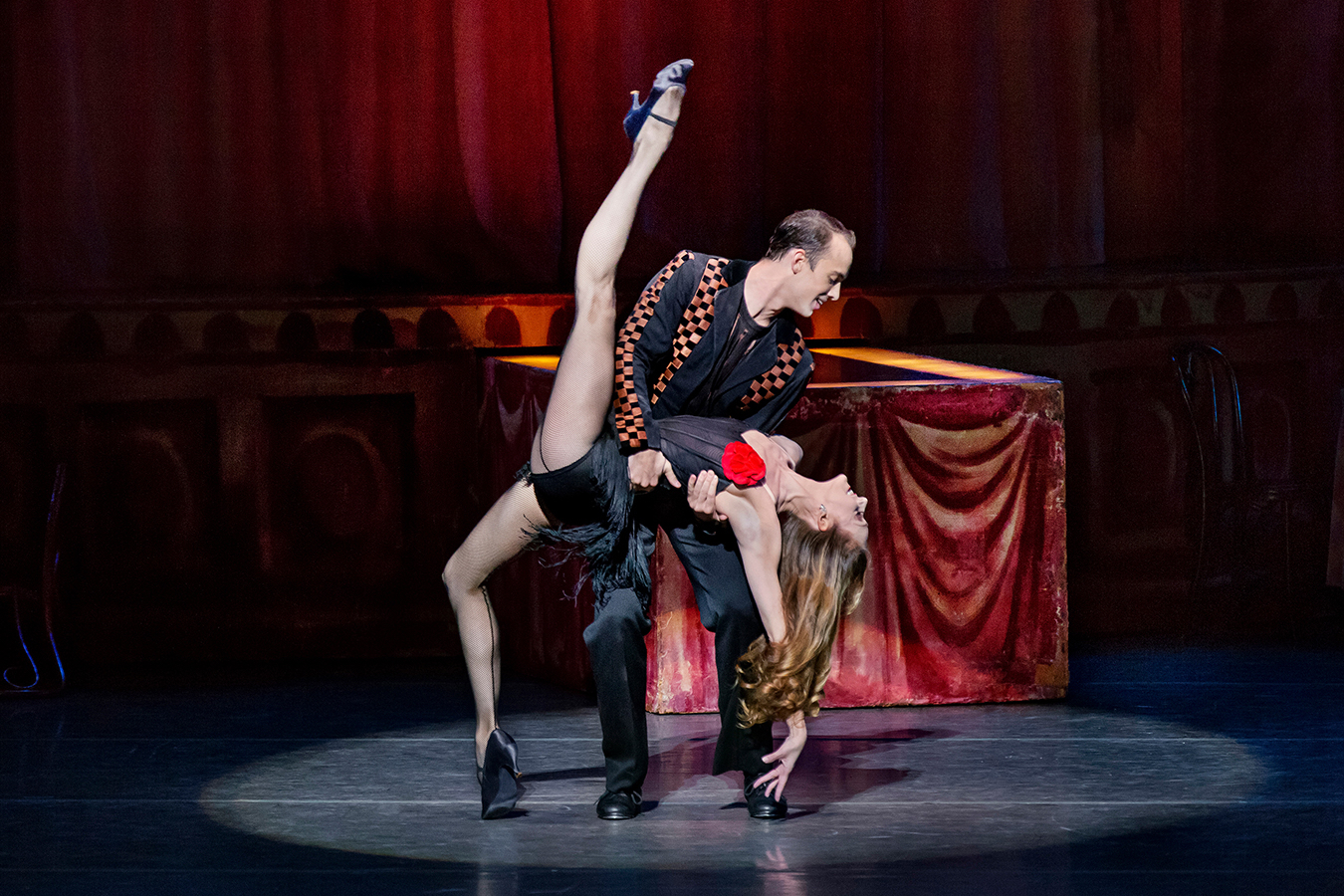
Another trip down memory lane turns out to be only slightly more rewarding. Slaughter On Tenth Avenue from the 1936 Richard Rodgers musical On Your Toes, sports a gorgeous nightclub setting with a stage platform and a bar (by Jo Mielziner) and handsome period costumes by Irene Sharaff.
I enjoyed the stage antics the first couple of occasions I saw the piece, but it simply is not a work that one can return to countless times before drowning in thick molasses of shtick. That is to say that a viewing (or two) is well worth it to delight in the feel-good painted-on naughtiness of the era.
The Russian dance conspirator (Daniel Applebaum) makes it almost timely. He pays a gangster to shoot his arch rival from the audience. After the initial negotiation, the bruiser takes his seat in the First Ring closest to the stage. By placing the goon in plain sight and as part of the audience, the other audience members become accomplices. What a lesson in theater!
The murder is supposed to occur at exactly the moment when the “Hoofer” (Tyler Angle) ends his dance onstage with a mock suicide. The plan goes awry, because he gets wind of the plan and repeats and repeats and repeats his penultimate dance phrase until the police arrive to apprehend the villain. A loveable “Striptease Girl” (Maria Kowroski) with an extended solo, a "Big Boss" and bartenders with brooms to clean up the bodies all take part in the fun madcap action.
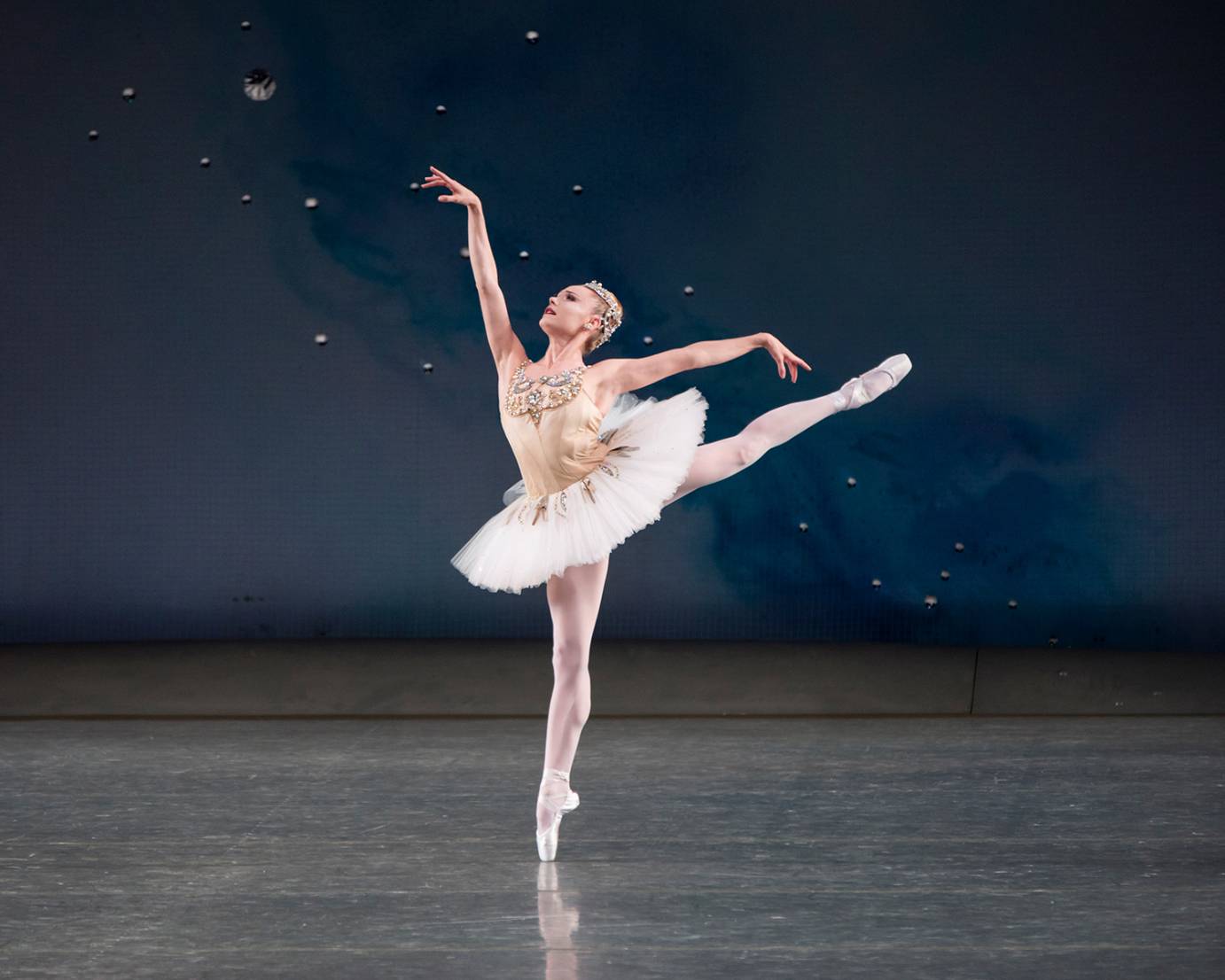
Balanchine created Diamonds for Suzanne Farrell, who — after many years of absence from the company — returned to coach the ballet. Set to music from Tschaikovsky’s Symphony No. 3 in D Major with scenery by Peter Harvey and costumes by Karinska, the piece celebrates the imperial ballet of the Czarist Russian Empire, the world Balanchine experienced as a child.
The structure of symmetry around the central ballerina (Sara Mearns) sparkles in all of its facets, but the rigidity of the hierarchical tiers of demi-soloists and corps, and the prettiness of patterns turn the prisms into a prison. A needed escape presents itself in one of the most serenely beautiful pas de deux ever created. Ballerina and danseur noble (Russell Janzen) enter from opposite diagonals and with a hesitating glide respectfully approach one another.
The suspense is delicious. Mearns, a seasoned ballerina, tries hard to fully capture all complexities of the role. Her ronds de jambs are generous, and her upper body is supple, even if her neck is held. Elegant and intelligent Janzen, the junior partner in this relationship supports her securely, but the spark between the two is missing. The return to spectral corps arrangements after the pas de deux, dims the luster.
On Friday, May 10, the company hosted a special evening for young patrons for its first edition of “Balanchine meets Peck.” The theater brimmed with energy. What a thrill to have the excitement in the house reflected on stage. And even better: the action on stage brought the audience to their feet cheering. They will be back for more and not just because there was free booze to be had.
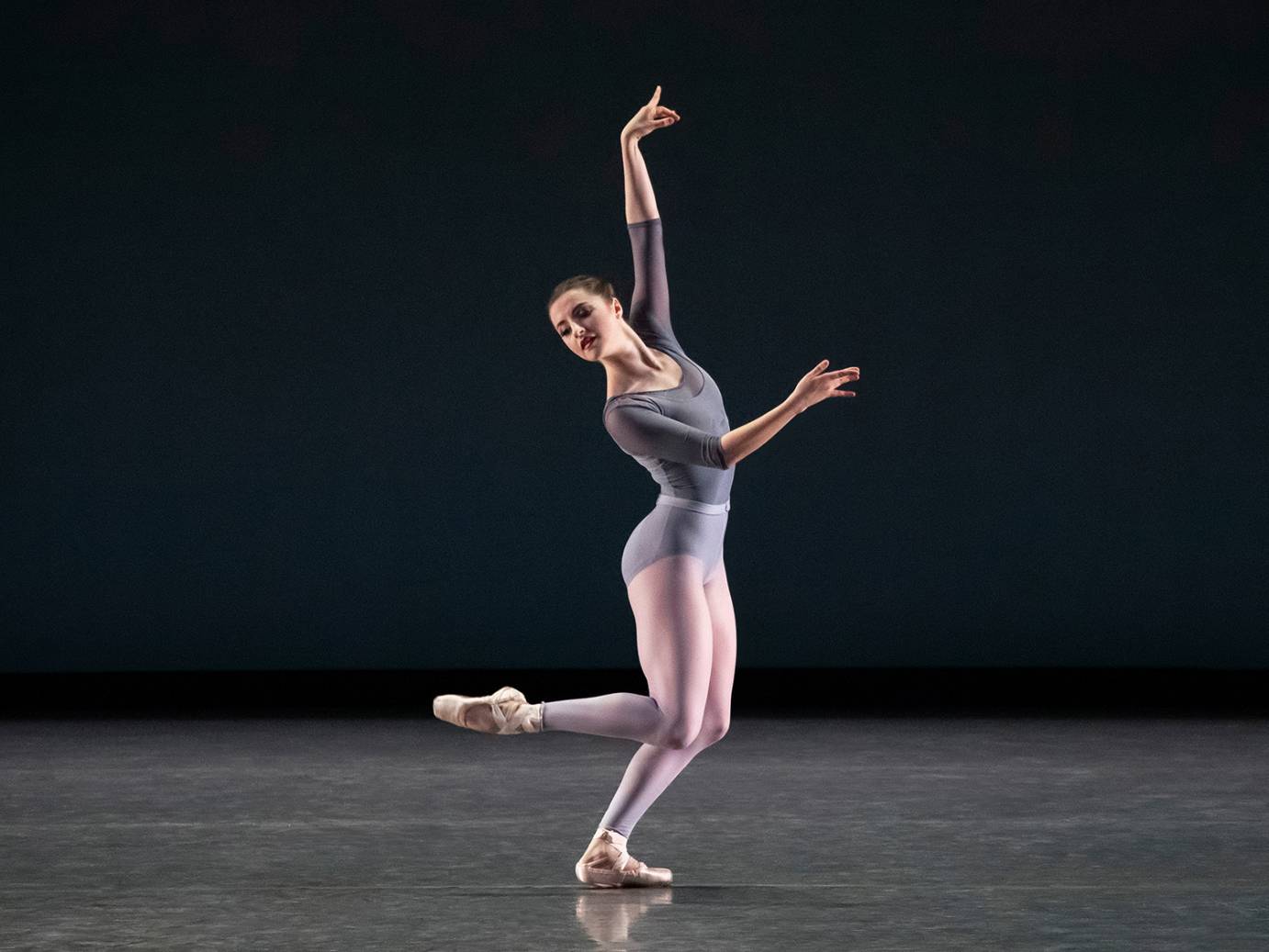
New York City Ballet commissioned a score by composer Sufjan Stevens for Resident Choreographer and Artistic Advisor Justin Peck’s Principia (which premiered on January 31st of this year). I saw it at the end of the winter season during a NYCB Art Series event. The interference of live visual art on stage distracted me back then and did not make me appreciate the dancing that followed, but this time I was taken by the way Peck builds, develops and revisits his onstage relationships.
He chooses to invest in different configurations of partners and friends. A trio with Claire Kretzschmar and two gentlemen is as valid a constellation as a male duet happening later, when one of the men featured in the trio focuses on a new partnership. Daniel Applebaum, Roman Mejia, and Taylor Stanley portray their respective parts with dedication. Most of the dance is playful and lighthearted. Peck invents yard games and dancers huddle in tipi configurations. One dancer runs and touches the top of the human tipi, the huddle dissolves and the dancers form another while a new dancer gets to run, catch up, and touch.
Just before the ballet ends, the work looks back on the life it gave us and reminisces at its own beauty by recalling each of the relationships for a brief moment. It is wise, maybe a bit sentimental, and moved me sincerely.
The program ends with Peck’s show stopping The Times Are Racing (2017). What a tremendous cast of dancers! What energy! And what a kick-ass piece!
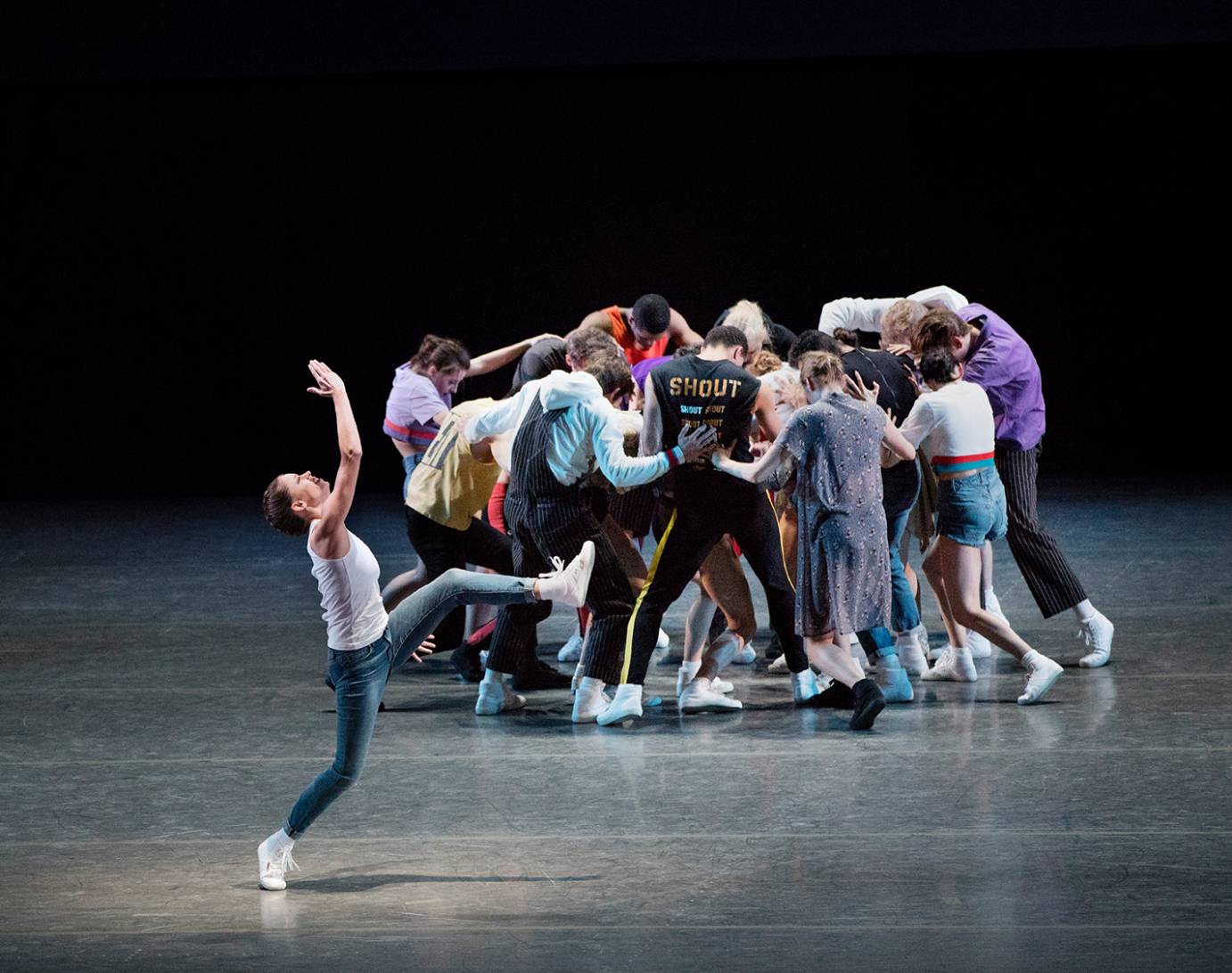
20 dancers inhabit the stage in youthful and bright street clothes (by Humberto Leon) and emit such joy that I want to be part of them. Dancing in sneakers, they run across the space and own it. Choreographer Peck shimmies and taps with Ashly Isaacs. Applebaum and Taylor Stanley form the central couple, their union characterized by care. They both repeat a step that takes the other one to the ground and back up again. Although they depend on each other, they do not smother their bond.
How prudent of them (and Peck) to leave enough space to show off their individuality and beauty. What warms my heart just as much as their supportive symbiosis is the fact that they are part of a group of enthusiastic young human beings who embrace the now and the future. Peck presents a new America full of hope, a society in which we celebrate our differences.
Sandwiched between the two Peck creations is the masterwork Symphony in Three Movements that Balanchine choreographed in 1972 for the Stravinsky Festival. The outside structure of the work seems classical — with the full cast of 32 dancers appearing in the opening and closing movements, while the central one is reserved for a pas de deux. But, the inner workings of the piece reveal a modern architecture and new world sensibility. The three principal women sport leotards in different shades of pink that effectively break up the black and/or white costuming of the rest of the cast.
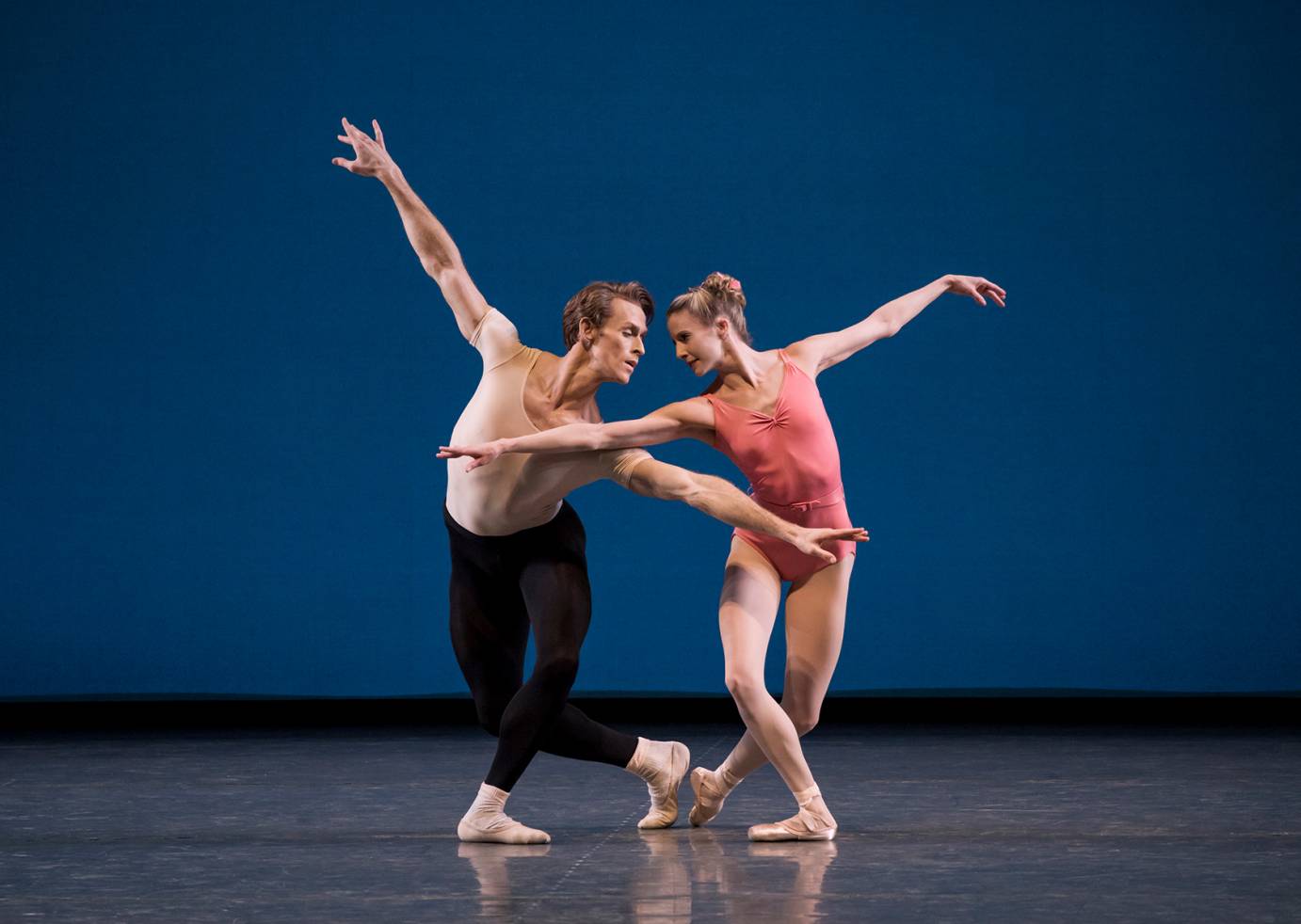
Diagonals form and dissolve, and lines juxtapose circles. Jumps explode in perfect unison. Syncopation and elements of jazz inform the music as well as the choreography. In contrast to the excitement of this futuristic architecture, the duet explores more delicate patterns. It could be set in a Japanese garden. Sterling Hyltin and Adrian Danchig-Waring choose to stylize their movement and thus create a plasticity that removes a heartfelt human connection. Their interpretation is valid and teaches me to look at the pas de deux with fresh eyes.
The piece ends in a memorable tableau. Groups of dancers stretch their arms overhead and others to the side constructing an expanse of bodies that signals a growing society. The reach is outward and upward with an enthusiasm that defined the United States of America before Watergate, the 1973 oil crisis and the deafening defeat in the proxy war of Vietnam.




